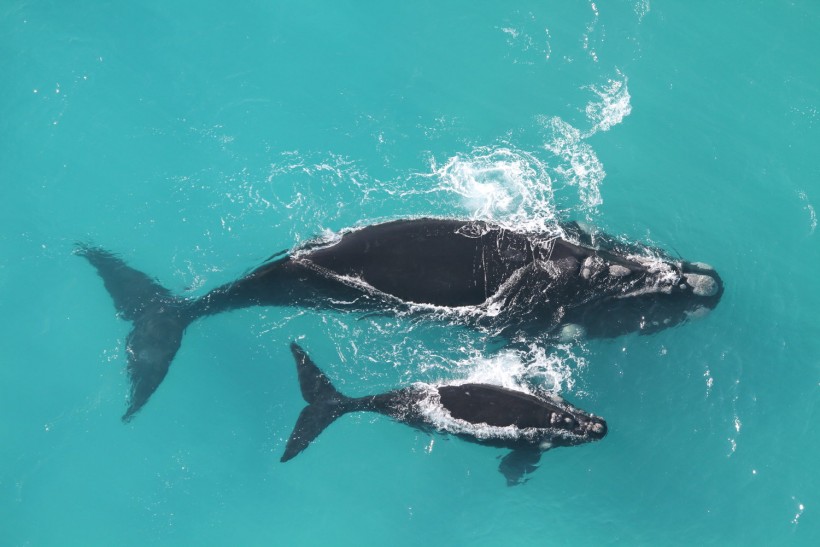A southern right whale and its calf was recently spotted traveling throughout the vast seas between South Africa and Argentina. The mother and child giants had been swimming for about 6,200 miles or nearly 10,000 kilometers in the ocean when they were detected by conservation authorities and experts.
Southern Right Whales Swims Over 6,000 Miles from South Africa to South America

The recent images captured from the whale's bonding moments were the first documented journey of the species.
The South Africa's University of Pretoria discovered a rare view of southern right whales traveling across the country's coasts last October.
Led by experts from the university's Mammal Research Institute (MRI), the sighting was confirmed through the images collected from an aerial survey between the beach-side town of Muizenberg and the southern Cape coast village of Nature's Valley.
The rare images were captured through a wider assessment project over the populations of the southern right whale species off the coast of the country. The tracking mission allowed the experts to find more than 400 individuals of the giant swimming mammals, according to a report by Cape Times.
In the same month, the experts identified four female individuals from a different site, specifically on Walker Bay. According to MRI, this separate group was tagged with coordinate devices and was included in a new study for us to understand more about the feeding behaviors and the migration patterns of the species.
Among the four female southern right whales, one swam off from the location and reached approximately 6,200 miles (10,000 kilometers). However, the individual was not alone, as it was accompanied by the calf it brought along the long journey. Together, the mother and child whales crossed the Atlantic and to the coasts of Argentina.
The tags initially given to the whales stopped relaying location signals by the middle of December, and came back throwing coordinates on April 19, Breitbart News reports.
ALSO READ: Like Cuttlefish; Squids Can Apparently Camouflage Like Their Cephalopod Relatives; Recent Study Says
Long-Travel of Rare Whales Caused by Lack of Food, Climate Change
MRI Whale Unit research lead Els Vermeulen explained that the voyage the female and calf whales underwent was the first to be recorded in the history of oceanic mammalian studies.
The unusual travel pattern of the two southern right whales to the Southern American waters might have been induced by their need for food resources, and this problem most likely was pushed by the uncontrollable effects of climate change in the species' native waters, Vermeulen continued.
Among the next observations that the team will carry out will focus on the return of the southern right whales to South Africa and the following activities if ever the two choose to remain in the foreign waters.
Vermeulen explained that more efforts are being relayed to examine the aloof whale species. In the history of southern right whale research in South Africa, only ten individuals were tagged to date, and this event was the first of the animals to show a distinct behavior, the project lead added.
According to the National Oceanic and Atmospheric Administration NOAA, the southern right whales could grow massively, reaching a length from 43 to 64 feet, and a weight of 176,000 pounds. Most of the whale population is found in the southern hemisphere. The species belong to the Endangered Species Act and are protected by the Marine Mammal Protection Act.
RELATED ARTICLE: Sharks Discovered to Have the Ability to Recognize When the Prey Will Lead to Feeding or in Vain
Check out more news and information on Ocean in Science Times.














